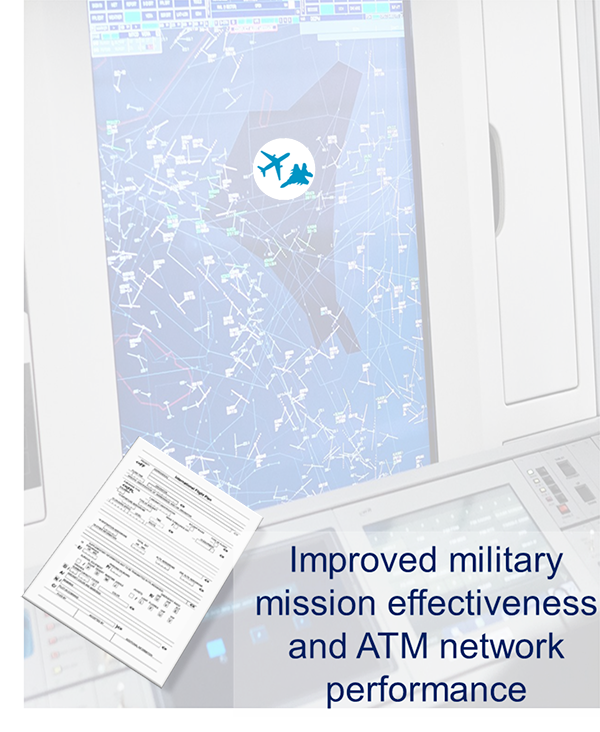The MITRANO project is developing a number of advanced solutions to manage mission trajectories and collaborative decision-making between civil and military operations.

Did you know that Europe’s armed forces operate over 150,000 flights a year?
Often happening at very short notice, to accommodate these flights, air traffic control typically has no other choice than to close the airspace. Of course, doing so has a direct impact on any of the more than 31,000 daily civil flights that happen to be in the area.
But what if it didn’t have to be one or the other? What if there was a way that both military and civil aircraft could safely share the same airspace at the same time?
According to the SESAR-funded MITRANO project, where there’s a will, there’s a way.
For MITRANO, that way is a portfolio of advanced solutions designed to manage mission trajectories and collaborative decision-making between civil and military operations.
“As the complexity of the European air traffic management (ATM) system continues to increase, at the same time the overall security environment is eroding – creating the conditions for a perfect storm,” says Remus Lacatus, part of Eurocontrol’s Civil Military Cooperation Division, who also serves as the project coordinator.
To mitigate these conditions, the project is taking a dual operational and technological approach, addressing the ATM system and its Communication Navigation and Surveillance (CNS) infrastructure.
“This approach ensures we can provide both common civil-military solutions to improve ATM system capacity and aviation efficiency while also securing the effectiveness of the military mission,” adds Lacatus.
Improving ATM capacity and aviation efficiency
As to improving ATM system capacity and aviation efficiency, the project, which is comprised of 15 partners, including representatives from the ATM industry, navigation service providers, network managers, researchers, and military airspace users, is developing two innovative operational solutions.
The first solution involves new operating methods, services, and tools to integrate mission trajectory data into the network level ATM execution phase.
“Leveraging digital data exchange capabilities and using automated impact assessments, this solution will enable collaborative decision-making between the military airspace user and relevant ATM network level actors,” explains Lacatus.
Integrating through smart segregation
With the tagline of ‘integrating through smart segregation’, the second solution is focused on further developing the advanced flexible use of airspace concept (AFUA). At the core of this concept is the use of dynamic mobile areas (DMA) fully integrated into the mission trajectory management process – from planning to execution.
While DMA constitutes a defined volume of airspace that satisfies specific operational requirements from different airspace users, the MITRANO solution focuses on DMA type 3, temporary airspace exclusion areas that are designed around moving aircraft.
Specifically, the project looks to prove that DMA type 3 is an effective tool for reserving and/or restricting airspace. “Our main aim is to prove that DMA type 3 represents a dynamic, safe, and flexible solution for integrating mission trajectory into the ATM execution phase,” remarks Lacatus.
While the solution focuses on military needs, Lacatus says it is applicable to a broad range of activities and events that the ATM system must address in the future to enable a more complex ATM environment, one that includes space launches and drone operations.
Futureproofing the aircraft surveillance system
Turning to MITRANO’s second area of focus, securing the effectiveness of the military mission, the project is working on its third solution to improve existing cybersecurity features.
“There is currently no effective way to identify whether a single ADS-B message sent by an aircraft is valid or if the sender is even real,” notes Lacatus. “We intend to change that by providing the technology needed to increase the reliability and security of the aircraft surveillance system and ensure its feasibility for the future.”
The proposed technological solution uses the data capacity provided by the recently validated Phase Overlay feature as a means of authenticating ADS-B messages and senders.
A balancing act
Although a work-in-progress, the MITRANO project has already made great strides towards securely accommodating both civil and military airspace demand within the limited capacity of today’s ATM system.
“Our success thus far is the direct result of our partners’ commitment to identifying the best options for balancing the sometimes-contradictory needs of civil and military airspace users,” concludes Lacatus.
Following a first year of intense work, the project’s ATM and CNS teams have finalised their initial conceptual and technological developments. The project is now turning its attention to validating its proposed operational and technological solutions, which will be done via real-time simulations with human-in-the-loop.
You can follow their progress here.

